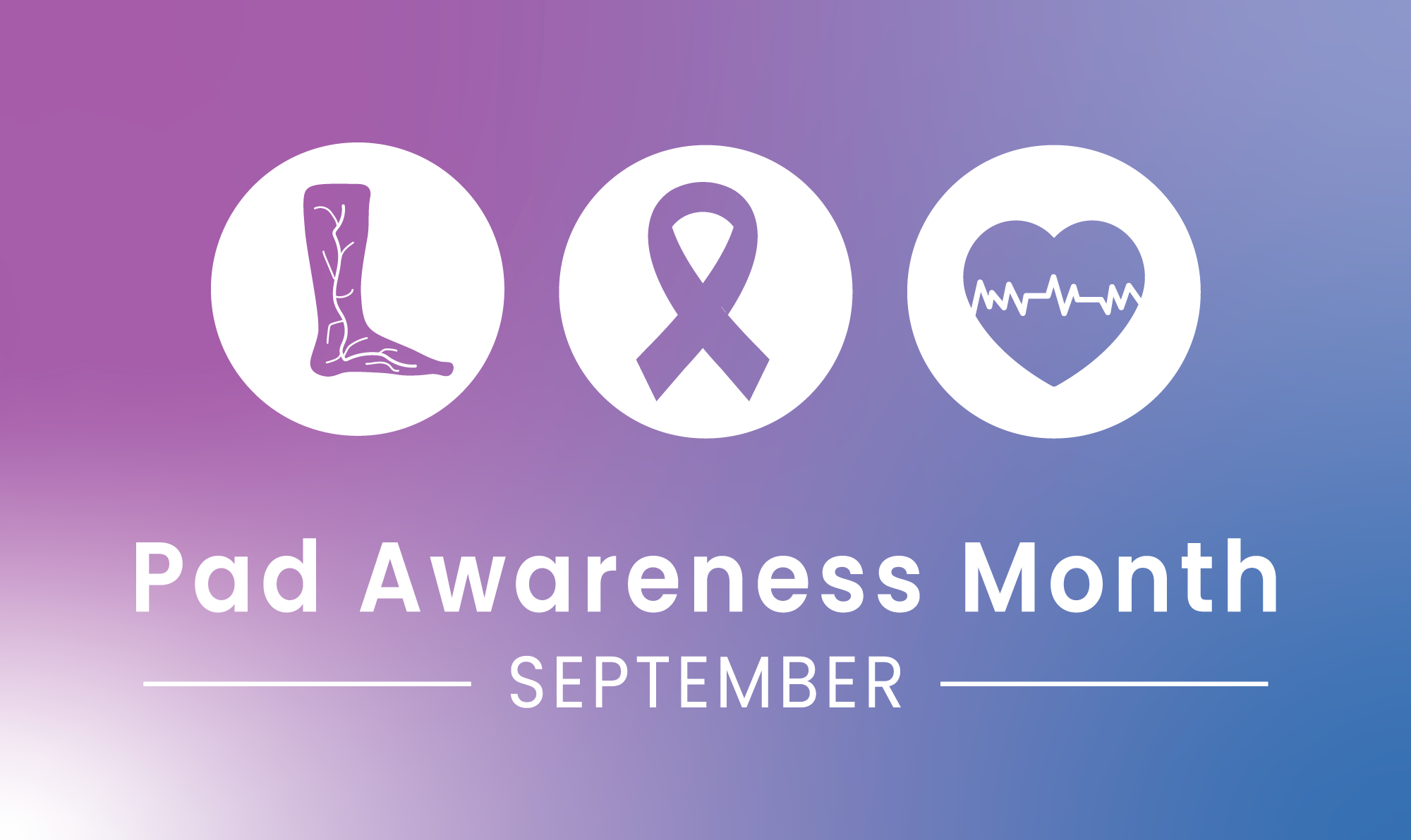
Peripheral artery disease (PAD) is a highly common heart condition that affects an estimated 7% of the U.S. population, or 8.5 million adults.
Often times there are no symptoms with PAD, which means it’s possible you could have this serious condition and not know.
September is PAD Awareness Month. Here’s more about PAD risk factors and symptoms, and the importance of getting tested if you think you may be at risk.
What Is PAD?
PAD is a condition in which the arteries that carry blood to the arms and legs become narrowed and hardened, thus reducing blood flow to these extremities. It usually occurs due to atherosclerosis, which is the buildup of plaques and fatty deposits—such as cholesterol—in the arteries.
Stroke and heart attacks are common complications of PAD, as well as critical limb ischemia, which is tissue death in the limbs. When caught early on, PAD can be managed with healthy lifestyle changes, medications, and, in severe cases, catheter based procedures or surgery to improve the blood flow.
PAD Risk Factors
Atherosclerosis is the primary cause of PAD.
Risk factors include:
- Age (PAD is more common in people aged 65 and older)
- Family history of PAD and other heart conditions
- Race and ethnicity (Blacks, American Indians, and Latinos are typically at higher risk)
- Smoking, or exposure to secondhand smoke
- Lack of exercise and physical activity
- Stress
- Poor nutrition, especially a diet high in saturated fats
- High blood pressure
- Obesity
- Diabetes, including gestational diabetes
- High cholesterol
- Metabolic syndrome
- Fibromuscular dysplasia
- Chronic kidney disease
- Blood clot disorders
- Preeclampsia
If you meet one or more of the above PAD risk factors, ask your healthcare provider about getting tested for PAD.
PAD Symptoms
PAD doesn’t always cause symptoms, and when it does, symptoms are usually mild. Leg pain that worsens with activity is the most common symptom of PAD, but 4 in 10 people with PAD do not experience leg pain.
Other symptoms of PAD may include:
- Hair loss
- Cold feet
- Muscle pain or weakness
- Low pulse in the feet
- Slow-healing wounds in the legs and feet
- Pale or blue-colored leg or foot
- Pins and needles sensation in the extremities
The Importance of Getting Tested if You Are at Risk
Getting tested for PAD is the only way to know if you have it, especially considering how this condition rarely produces symptoms.
If you meet one or more PAD risk factors, make an appointment with your healthcare provider right away. Your provider can perform the necessary testing, including blood tests, ultrasound, angiography, and the ankle-brachial index (ABI) test.
ABI Testing
The ABI test may be the most common screening test used to diagnose PAD. This test compares the blood pressure in your ankle with that in your arm to determine whether you have PAD.
Further testing may then be required depending on the results of the ABI.
ABI testing is available at The Center for Vascular Care at HCA. Our team can provide you with the resources you need to take control of your vascular health. If you meet one or more risk factors for PAD, contact us today at (908) 806-0190 to request an appointment for testing. One of our specialists can discuss your treatment options and personalized diagnosis.
